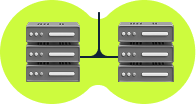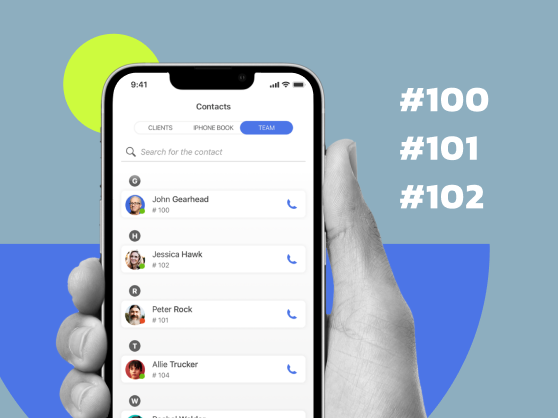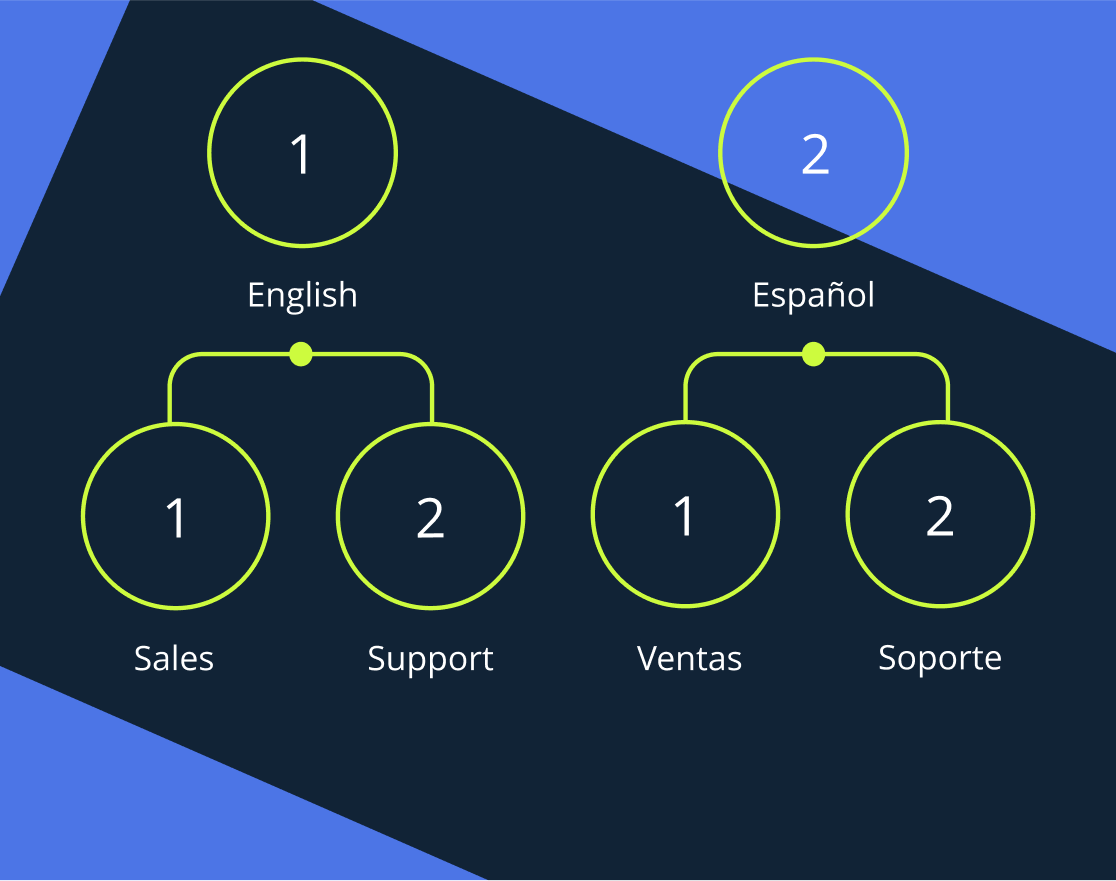Outbound calling is integral to any marketing strategy for proactive client engagement and sales. Understanding how to implement it can significantly impact a company’s growth and customer relationships. In this guide, we will explore this type of strategy and why it always works, providing certain practices that can improve the overall process.
What is an outbound call?
An outbound call is initiated by a company or organization to an individual outside the organization. Sales or support agents typically make them to inform, engage, sell, or follow up with potential or existing databases. Outbound phone calls aim to generate sales, gather feedback, conduct market research, or improve customer service.
Key points include:
- Well-planned scripts: Agents use carefully crafted scripts to deliver important points and make sure that everything is communicated clearly.
- Automated dialing technology: Tools like auto-dialers or predictive dialers increase productivity by automating the dialing process.
- Personalization: Using client data to adjust the call flow, improving engagement and response rates.
- Targeted lists: Focusing on specific customer segments or demographics to enhance campaign effectiveness.
Outbound vs. inbound calls
The key difference between outbound and inbound calls lies in who initiates the contact:
- Outbound calls: The company initiates calls to the customer. They are used for sales, marketing, outreach, or follow-ups. The goal is to engage with clients or prospects, creating a more proactive customer service approach.
- Inbound calls: Initiated by the customer and directed to the company. Customers make these telephone calls for support, inquiries, or to purchase a product or service. The company responds to the customer’s needs or questions.
Types of outbound calls
Outbound phone calls can be divided into two primary types, each serving a specific strategic purpose in customer outreach and sales.
Cold calls
Cold calls are unsolicited to potential leads who have not previously interacted with the company. They aim to introduce the company’s products or services and gauge interest in future engagement. Cold calling requires skillful delivery and resilience, as recipients may be unprepared and may need a little convincing to consider the offer.
Examples of cold calls:
- Sales calls: Initiating contact to sell products or services to new prospects.
- Market research calls: Collecting information to understand market needs and trends.
- Lead generation calls: Identifying new potential clients who have never interacted with the company.
- Survey calls: Gathering feedback on industry trends or customer preferences.
- Event invitation calls: Inviting potential attendees to upcoming events or webinars.
- Awareness campaigns: Informing potential leads about new products, services, or initiatives.
- Follow-up calls after marketing campaigns: Contacting individuals who have shown indirect interest through ads or website visits.
- Reactivation calls: Reaching out to former clients who have become inactive.
Cold calling can be challenging due to the lack of prior relationships, but when done well, it can open doors to new markets and client segments.
Warm calls
Warm calls are made to prospects who have previously interacted with the company. These would be potential clients who have signed up for a newsletter, attended a webinar, or engaged on social media. Because warm calls are more personalized, based on the recipient’s known interests and past interactions, they are generally more receptive than cold ones.
Examples of warm calls:
- Support phone calls: Providing follow-up support or updates to an existing client database.
- Feedback calls: Asking for feedback from clients who have experience with the company’s offerings.
- Collection calls: Reminding customers of due payments when there is an existing relationship.
- Appointment setting calls: Arranging meetings or follow-ups with interested leads.
- Fundraising calls: Contacting past donors or interested contributors.
- Event promotion calls: Informing past attendees or interested individuals about upcoming events.
- Upselling or cross-selling calls: Offering additional products or services to current customers.
- Renewal reminder calls: Notifying customers about upcoming subscription or service renewals.
Why are outbound calls important?
Outbound calling plays a critical role in business growth and customer engagement. Here are some reasons why they are essential:
- Direct customer engagement: Outbound calls allow for immediate, personalized interaction, enabling businesses to build relationships and better understand customer needs.
- Expanding customer base: Proactively reaching out to potential leads can open up new markets and increase the customer base.
- Generating sales opportunities: These phone calls can create new sales leads and close deals that might not occur through inbound methods alone.
- Gathering market intelligence: Conversations with clients provide insights into market trends, preferences, and competitive landscapes.
- Enhancing customer retention: Regular follow-ups and support interactions can improve customer satisfaction and loyalty.
- Re-engaging inactive customers: Outbound telephone calls can revive interest among customers who have not interacted with the company recently.
- Increasing brand awareness: Proactive outreach helps increase visibility and recognition in the market.
- Cost savings in marketing: Outbound calling can be more economical than some traditional advertising methods, providing a measurable return on investment.
According to a study by Forrester Research, companies that excel at lead nurturing through outbound efforts generate 50% more sales-ready leads at 33% lower cost. Outbound dialing remains a vital tool for businesses aiming to engage with their audience and drive consistent growth.
Technology to use all benefits of outbound calling
Using the right technology is 50% of your success that can maximize the effectiveness of outbound calling campaigns. Key technological features include:
- Auto dialers: Tools like predictive and power dialers automate dialing, reducing idle time and connecting agents with more live prospects.
- CRM integration: Integration with customer relationship management systems allows outbound call center agents to access and update customer information in real time.
- Call recording and monitoring: Recording interactions for quality assurance helps train a team of outbound caller agents, ensure compliance, and improve strategies.
- Advanced analytics and reporting: Detailed analytics provide insights into performance, guiding data-driven decision-making.
- Interactive voice response (IVR): IVR systems can pre-qualify calls, route customers to the right agents, and handle simple inquiries.
- Artificial intelligence (AI) and machine learning: AI-powered tools assist in call scripting, sentiment analysis, and predictive modeling to enhance interactions.
- Omnichannel support: Integrating calls with email, SMS, and chat ensures a unified customer experience and allows follow-ups through preferred channels.
- Compliance with outbound call management: Built-in compliance features help adhere to regulations like the Telephone Consumer Protection Act (TCPA) and the General Data Protection Regulation (GDPR).
- Scalability and flexibility: Cloud-based solutions allow businesses to adjust operations based on demand without significant infrastructure changes.
- Mobile accessibility: Mobile apps enable agents to make and receive calls from anywhere, supporting remote work environments.
Investing in technology that includes these features can significantly improve outbound calling campaigns’ productivity and success rate.
MightyCall combines these crucial features into one solution, offering both functionality and ease of use. With 99% uptime, native DNC integration, and highly praised support, it is designed to improve and uplift your outbound efforts. Consistently recognized by G2 industry awards, our platform helps make each call more productive and every campaign more successful. Experience the difference with MightyCall and take your outbound calling to the next level.
schedule your personalized demo with our amazing team

How to choose the right outbound call center software?
Selecting the right software for outbound calling is incredibly important. Here are practical tips on how to choose the best solution:
- Identify essential features: Determine necessary features, such as auto dialing, CRM integration, or analytics.
- Evaluate user-friendliness: Opt for software with an intuitive user interface to reduce training time.
- Check integration capabilities: Ensure compatibility with existing systems like CRM or marketing tools.
- Ensure compliance support: Include features to maintain adherence to relevant software regulations.
- Consider scalability: Choose a solution that can grow with your business.
- Assess reliability and support: Look for vendors with a strong reputation for uptime and quality customer support.
- Compare costs: Ensure the pricing model fits your budget without compromising essential features.
- Look for customization: Tailor workflow and scripts according to your own processes.
- Read reviews and testimonials: Research feedback from other users.
- Test with free trials: Use trial periods to ensure the software meets your needs.
Carefully select the right software to improve your outbound calling performance and drive your business forward.
Best tips and strategies for outbound calling
Effective outbound calling strategy requires strategic planning and execution. Here are five essential tips and strategies that might help you.
Develop a compelling outbound sales call script
Create a script that is clear, concise, and conversational. Include the following:
- Engaging opening lines: Try to capture attention within the first few seconds.
- Value proposition: Clearly communicate the benefits of your product or service offers.
- Open-ended questions: Encourage dialogue to understand their needs.
- Objection handling: Prepare responses to common objections.
- Clear call-to-action: Guide the prospect toward the next step.
Regularly update the script based on feedback and performance metrics.
Personalize each business phone call
Use customer data to shape your conversation:
- Research prospects: Understand their industry and potential pain points.
- Use their name: Personal touches build trust.
- Reference past interactions: Mention previous communications or actions.
Personalization increases engagement and shows that you value the prospect.
Train and coach your customer satisfaction team
Invest in continuous training:
- Role-playing sessions: Practice outgoing calls to build confidence.
- Provide feedback: Use call recordings to offer constructive criticism.
- Develop skills: Focus on communication, product knowledge, and sales techniques.
A well-trained team is more likely to achieve higher conversion rates.
Optimize call timing via analytics
Schedule telephone calls when prospects are most likely available:
- Consider time zones: Manage different time zones effectively.
- Analyze best times: Determine when your audience is most responsive.
- Avoid peak hours: Calling during less busy times may yield better results.
Optimal timing increases the likelihood of connecting with prospects.
Ensure legal and compliance adherence
Stay compliant with regulations:
- Understand laws: Familiarize yourself with TCPA, GDPR, and other laws.
- Maintain do-not-call lists: Update contact lists regularly.
- Obtain consent: Ensure you have permission to contact individuals.
Overcoming outbound phone call challenges
Outbound calling comes with challenges. Here are the three most significant obstacles and strategies to overcome.
Dealing with call rejection in a contact center
Frequent rejection can demotivate agents. High rejection rates can lower morale and affect performance.
How to address it:
- Provide resilience training: Teach agents to handle rejection positively.
- Improve call scripts: Enhance opening lines to engage prospects better.
- Focus on quality leads: Target prospects who are more likely to be interested.
Navigating regulatory compliance with sales teams
Keeping up with laws like TCPA and GDPR may seem complex, while non-compliance can result in penalties and a damaged reputation.
How to address it:
- Stay informed: Update knowledge of relevant regulations.
- Use compliance tools: Implement software that automates adherence checks.
- Educate your team members: Ensure the outbound caller understands legal requirements.
Maintaining call quality with high volumes
A high call volume may lead to reduced quality. Consequently, poor quality leads to dissatisfaction and harms the brand.
How to address it:
- Implement quality assurance: Monitor phone calls and provide feedback.
- Manage workloads: Distribute calls evenly to prevent burnout.
- Invest in training: Continuously develop agent skills.
Proactively addressing these challenges ensures that your outbound calling campaigns remain effective.
Measuring outbound call effectiveness
Measuring success is essential to understand the impact of your strategies. Key metrics include:
- Call connection rate: Percentage of phone calls reaching a live person.
- Conversion rate: Percentage achieving the desired outcome.
- Average call duration: Indicates engagement levels.
- First call resolution: Reflects efficiency in resolving issues.
- Call abandonment rate: Percentage where the customer hangs up before speaking.
- Agent productivity: Number of calls made and outcomes achieved.
- Customer satisfaction score (CSAT): Feedback about the experience.
- Lead response time: Speed of contacting leads after they display interest.
- Cost per call: Total cost divided by calls made.
Regularly monitoring these metrics helps optimize the overall performance.
Expand your reach and foster new relationships
Outbound dialing is a vital strategy for businesses wanting to expand reach and strengthen customer relationships. Companies can enhance their efforts and achieve better results by understanding what outbound calls are, using appropriate technologies, implementing effective strategies, and addressing common challenges.
Focusing on personalization, compliance, and continuous agent training improves customer engagement and drives growth. Regularly measuring performance and adapting data-based strategies ensures that outbound calling remains effective in a dynamic business environment.




























